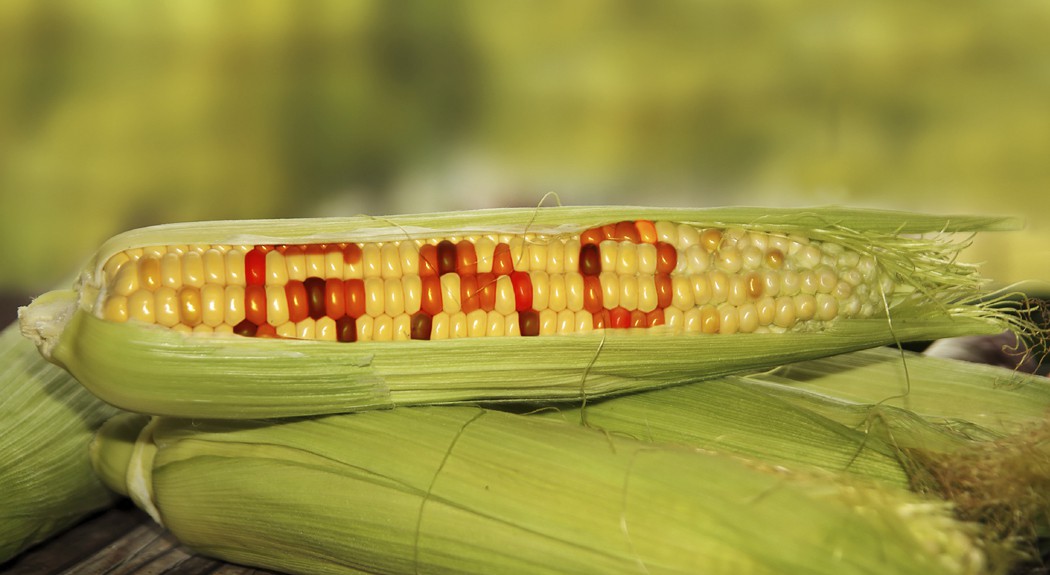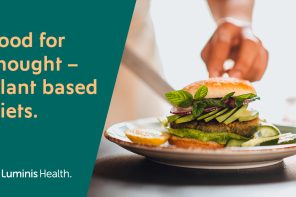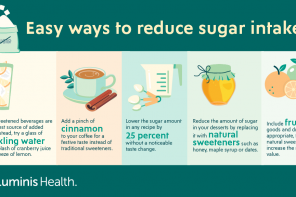By now, you’ve probably heard about GMOs (genetically modified organisms). But with all the talk about these harmful organisms in our food, how can you separate fact from fiction?
Let’s start at the beginning. All food begins as an organism, a plant or animal with many traits. Since the dawn of agriculture, farmers have modified these traits using methods like selective breeding, cross pollination and hybridization to improve their crops. But GMOs go beyond these methods.
To make a genetically modified organism, scientists select a desired trait from one living thing, copy that trait and place it in to another living thing. This process would not occur naturally.
The most common GMO crops are soybeans, corn, cotton and sugar beets. Most GMO crops eventually end up on the dinner table as ingredients in the foods we eat, including everything from cereal to dessert. GMO crops are processed to become oil, sugar, starch, syrup, fiber and protein ingredients, as well as vitamins in foods and dietary supplements. Most meats, poultry, eggs, dairy products and farmed seafood contain GMOs because field corn and soybeans are used as feed for livestock. Beyond grains, most of the yeast and enzymes used to make everything from bread to cheese come from GMOs.
Is non-GMO the same as organic?
No. Non-GMO crops are still treated with herbicides and pesticides. Therefore, they are not organic. And the U.S. Food and Drug Administration hasn’t set any standards to regulate the use of the non-GMO label. On the other hand, certified organic products cannot include GMOs. This means farmers aren’t allowed to grow produce from GMO seeds, their animals can’t eat GMO feed and food producers can’t use any GMO ingredients.
What does the organic certification mean?
When you see the USDA organic seal on a food or beverage product, you’ll know it’s organic. This certification bans chemical fertilizers, synthetic substances, irradiation, sewage sludge and GMOs in the production of these products. Antibiotics and synthetic hormones are also banned in organic meat and poultry.
How can you eat less GMO foods?
In short, eat less processed foods. Replace processed snacks with foods that are naturally non-GMO. These include fresh fruit, vegetables, potatoes, dried beans, nuts and seeds. Consider buying only organic. Choose foods that are verified non-GMO by a third party, like The Non-GMO Project. Avoid dining out, as most restaurants don’t use non-GMO ingredients. Want to make a simple switch? The most important foods to buy non-GMO are meat, eggs, yogurt and milk. These foods are all affected by animal feed, which is often genetically modified.
Are GMO foods harmful?
To date, there is no solid research that shows people have been harmed by GMO foods. However, just because there’s no evidence of harm does not mean GMO foods have been proven safe. Most research hasn’t existed long enough to determine the effects of GMO foods throughout a person’s lifetime.
Non-GMO and organic products are a good place to start, but if you really want a healthier diet eat more foods that don’t need a label. Fresh fruits and vegetables are the hallmark of a healthy, nutritious diet.
Sources:
New England Journal of Medicine: GMOs, Herbicides, and Public Health
Consumer Reports: GMO foods: What You Need to Know
Tufts University: Questioning GMOs

By Ann Caldwell and Maureen Shackelford, nutritionists and registered dietitians at Anne Arundel Medical Center. To reach them call 443-481-5555.




